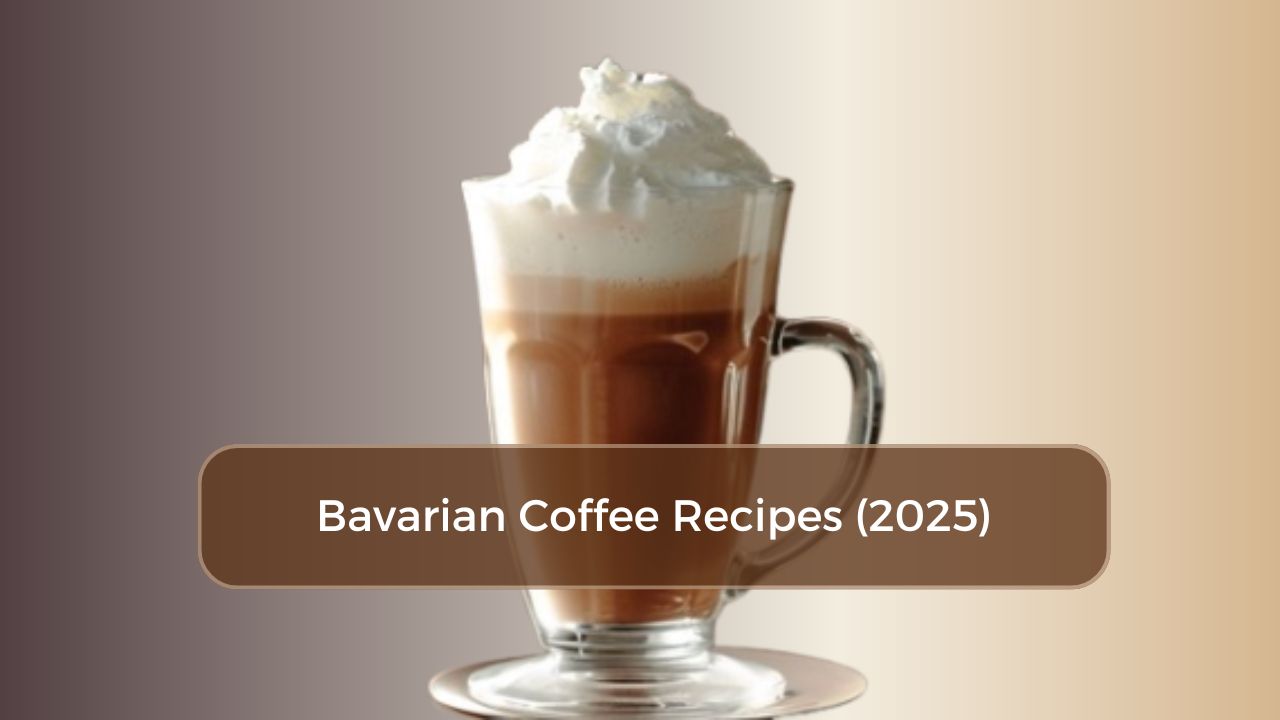Bavarian Coffee Recipes: Traditional German Coffee Recipes (2025)
In Bavaria, coffee is more than just a drink it’s an experience. The region’s coffee culture has deep roots, offering both traditional and modern variations. As of 2023, a study revealed that Bavarian coffee houses serve over 250 specialty coffee drinks daily.
This reflects the high demand for quality coffee and the precision of German brewing methods. In this guide, we’ll explore authentic Bavarian coffee recipes and German coffee traditions that you can recreate at home.
Whether you’re a fan of the classic Einspänner coffee topped with whipped cream, or intrigued by the Karlsbader brewing method, these recipes combine the finest aspects of German coffee culture.
Traditional Bavarian Coffee Preparations
- Classic Einspänner with Double Espresso and Whipped Cream
- Karlsbader Brewing Method with Three-Part Porcelain Drip
- Traditional Coffee and Milk Ratios
- Proper Temperature Control Techniques
Classic Einspänner With Double Espresso And Whipped Cream
The Einspänner is a true Bavarian classic, often enjoyed in historic German cafés. It combines a rich double espresso with a generous topping of whipped cream.

The balance of bitterness from the espresso and the sweetness of the cream creates a delightful experience. The whipped cream is not just a garnish it’s an integral part of the drink, helping to soften the strong flavor of the espresso while providing a luxurious texture.
Karlsbader Brewing Method With Three-Part Porcelain Drip
The Karlsbader method is a traditional brewing technique used in parts of Bavaria. It involves a three-part porcelain drip system, often considered an art form in itself.
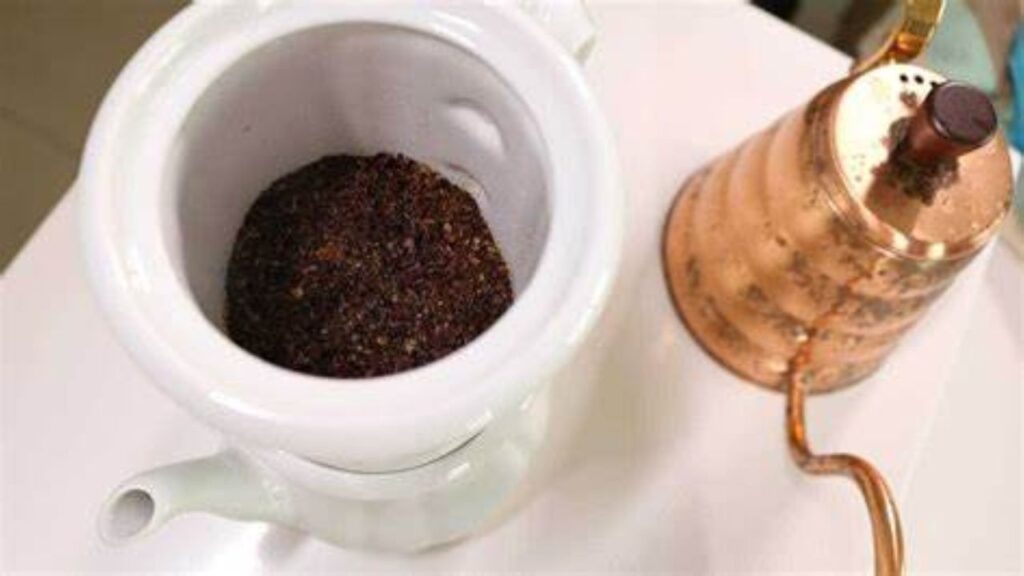
The water is slowly poured through the grounds, allowing for maximum extraction. This brewing method is beloved for producing a clean, full-bodied cup of coffee. Precision and patience are key, as the temperature and brewing time must be carefully controlled to extract the best flavors.
Traditional Coffee and Milk Ratios
Bavarians typically adhere to specific coffee and milk ratios. A typical German coffee might contain less milk than its American counterpart, allowing the bold coffee flavor to shine through.
When preparing a milk coffee, it’s essential to maintain the balance. Too much milk can overpower the coffee, while too little may make the drink too strong. In Bavaria, the standard ratio is about two-thirds coffee and one-third milk.
Proper Temperature Control Techniques
In Bavaria, coffee temperature is crucial. Traditional coffee recipes require the water temperature to be precisely controlled for the best extraction. Ideally, water should be between 195°F to 205°F (90°C to 96°C) when brewing.
The temperature affects the coffee quality, ensuring the best flavor extraction from the beans. Too hot or too cold, and the coffee may taste bitter or under-extracted.
Regional Coffee Variations
- Munich-Style Coffee with Chocolate and Cream
- Franconian Coffee with Local Honey
- Black Forest Coffee Variations
- Alpine Coffee Preparations
Munich-Style Coffee with Chocolate and Cream
Munich-style coffee is a delightful treat combining the flavors of chocolate and whipped cream. It’s made by adding a layer of melted chocolate or cocoa powder to the bottom of a coffee cup, followed by a shot of strong coffee and a generous dollop of whipped cream on top. This combination of flavors is popular in German cafés, offering a comforting, indulgent coffee experience.
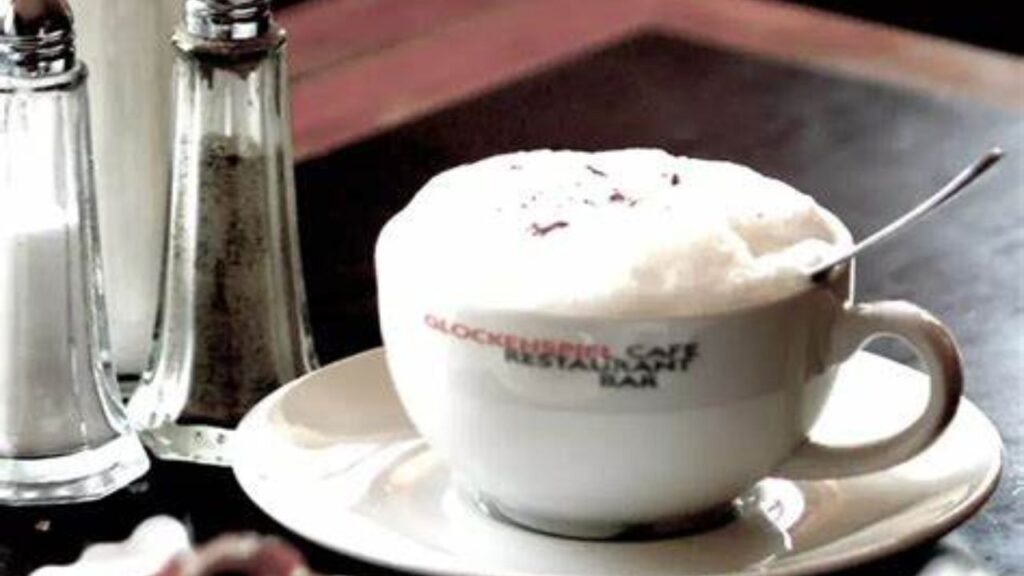
Franconian Coffee with Local Honey
Franconian coffee is a regional specialty that incorporates local honey into the drink. The sweet honey is stirred into the coffee, creating a smooth, subtly sweet flavor profile.
Franconia, a region in northern Bavaria, is known for its rich agricultural heritage, and local honey plays an important role in the culinary culture.
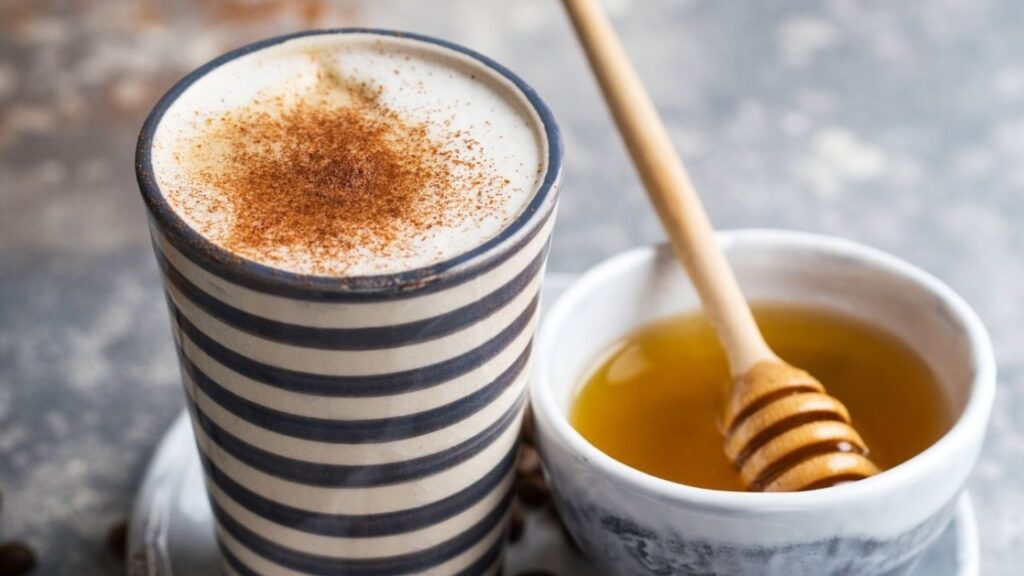
Adding honey to your coffee gives it a distinctive regional flair, blending the deep, bold flavors of the coffee with the sweetness of the honey.
Black Forest Coffee Variations
The Black Forest region in southern Germany is famous not only for its scenic landscapes but also for its coffee variations. One popular option is the Black Forest coffee, which includes a shot of cherry schnapps or liqueur, blending the flavors of coffee and cherry uniquely.
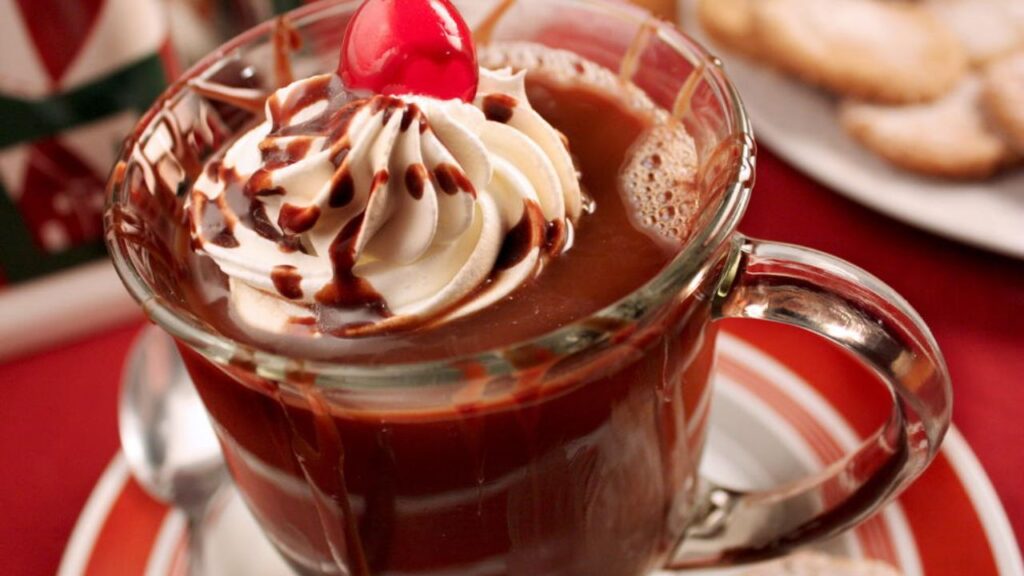
The liqueur adds an extra layer of richness and depth, making this an indulgent choice for coffee lovers seeking a more complex flavor profile.
Alpine Coffee Preparations
In the Alps, coffee takes on a cozy, hearty appeal, perfect for warming up after a day in the mountains. Alpine coffee often includes ingredients like whipped cream and local liqueurs, reflecting the regional love for strong, rich drinks.

Some variations also incorporate spices, such as cinnamon or nutmeg, to create a warming, aromatic experience.
Modern Café Interpretations
- Contemporary Bavarian Coffee House Specials
- Fusion Drinks Combining Traditional and Modern Elements
- Specialty Milk Alternatives
- Updated Brewing Techniques
Contemporary Bavarian Coffee House Specials
As Bavarian cafés evolve, modern interpretations of traditional drinks have become popular. Many cafés now serve fusion drinks that combine elements of both the traditional and contemporary.
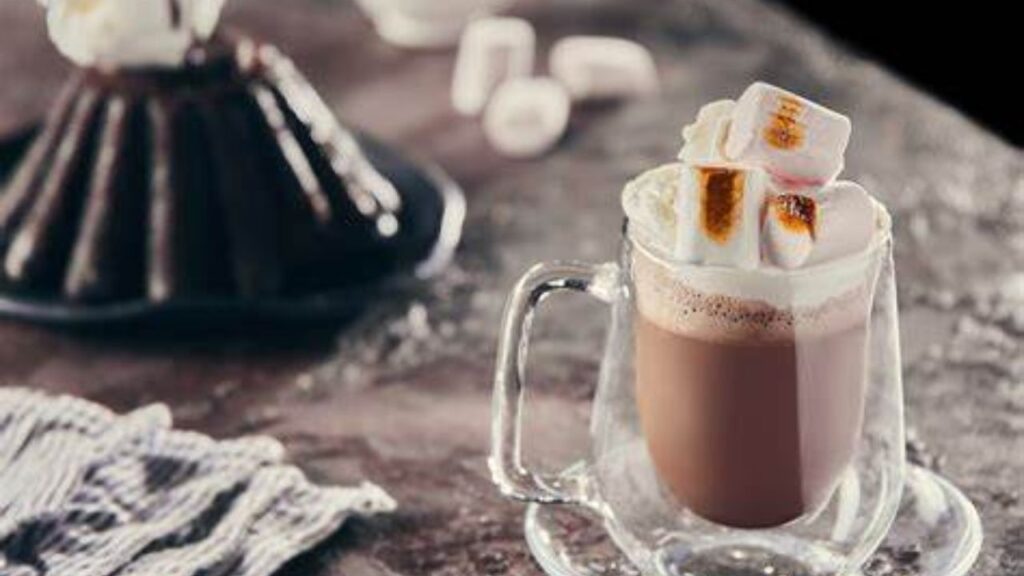
For example, some modern versions of the Einspänner might include flavored syrups or infusions, such as hazelnut or vanilla, offering a new twist on the classic.
Fusion Drinks Combining Traditional and Modern Elements
One exciting development in German coffee culture is the rise of fusion drinks that merge traditional brewing methods with modern flavor profiles.
Bavarian coffee houses are experimenting with new ingredients, like matcha or coconut milk, creating inventive drinks that appeal to a younger generation of coffee drinkers.
These fusion drinks still maintain the essential characteristics of Bavarian coffee but add creative touches to make them more modern and accessible.
Specialty Milk Alternatives
With the growing trend of plant-based diets, milk alternatives have become a staple in modern Bavarian coffee culture. Oat milk is particularly popular in cafés, providing a creamy texture that complements the boldness of the coffee.
Almond milk and soy milk are also common substitutes, offering different flavors and textures that appeal to a variety of tastes.
Updated Brewing Techniques
While traditional methods like the Karlsbader brewing method remain popular, many Bavarian cafés are now incorporating modern brewing techniques such as pour-over or cold brew.
These methods allow for more control over the brewing process, resulting in a cleaner cup of coffee. Cold brew coffee, in particular, has seen a surge in popularity in recent years for its smooth, less acidic taste.
Essential Ingredients & Equipment
- Traditional German Coffee Roasts
- Proper Water Specifications
- Required Tools and Equipment
- Quality Standards for Ingredients
Traditional German Coffee Roasts
One key to making authentic Bavarian coffee at home is using the right beans. German roast coffee is darker and offers a rich, full-bodied flavor.
The beans used for traditional German coffee are often roasted longer than those used in lighter blends, which brings out a deeper, bolder flavor profile. Make sure to choose freshly ground coffee to ensure the best taste.
Proper Water Specifications
The quality of water is vital to brewing the perfect cup of coffee. In Bavaria, where water quality is top-notch, coffee preparation emphasizes using clean, fresh water with minimal minerals.
If you’re brewing at home, consider using filtered water to achieve the best flavor extraction. The correct water-to-coffee ratio also plays a significant role in achieving the perfect brew.
Required Tools and Equipment
To brew the best German coffee, certain tools are essential. A porcelain filter is used in traditional brewing methods like the Karlsbader method.
For those who prefer a more modern approach, an espresso machine or a pour-over setup can work well. Make sure your equipment is clean, as old coffee oils can negatively affect the flavor.
Quality Standards for Ingredients
The quality of ingredients plays a crucial role in the success of any coffee recipe. Use freshly roasted beans, high-quality milk, and premium whipped cream for the best results. In Bavarian coffee culture, attention to detail is paramount, ensuring that every cup meets high standards of quality.
Serving & Presentation
- Traditional Bavarian Coffee Vessels
- Accompaniment Recommendations
- Temperature Considerations
- Seasonal Adaptations
Traditional Bavarian Coffee Vessels
In Bavaria, the presentation of coffee is just as important as the taste. Traditional Bavarian coffee vessels include porcelain cups, which are known for retaining heat and allowing the coffee to stay warm longer. These cups often feature intricate designs, making the drinking experience more enjoyable.
Accompaniment Recommendations
In a traditional German café, coffee is often accompanied by a slice of cake or pastry. Popular choices include German pastries like Apfelstrudel (apple strudel) or a buttery croissant. These sweet treats pair perfectly with the bold flavors of Bavarian coffee, adding to the experience.
Temperature Considerations
Serving coffee at the correct temperature is crucial. In Bavaria, coffee is served at a slightly cooler temperature than in other countries, allowing you to enjoy the full spectrum of flavors. Too hot, and the coffee might taste burnt; too cold, and it could lose its aroma and depth.
Seasonal Adaptations
Bavarian coffee recipes adapt to the seasons throughout the year. In the colder months, rich drinks like Black Forest coffee with liqueurs or spiced alpine coffee are popular.
During the summer, cold brew and iced coffee variations are favored. The use of seasonal ingredients, such as fresh berries in the summer or spices in the winter, helps to keep the coffee offerings fresh and exciting.
Conclusion
Bavarian coffee culture is a beautiful fusion of tradition and modernity. Each story tells a story of German customs and regional variations. From the classic Einspänner to contemporary fusion drinks, Bavarian coffee offers something for everyone.
By mastering these recipes and paying attention to the key elements like coffee temperature, ingredient quality, and brewing techniques, you can bring the authentic German coffee house experience to your home.
Whether you’re enjoying a quiet moment with a Munich-style coffee, sharing a Franconian coffee with friends, or experimenting with modern variations, these recipes celebrate the heart of Bavarian coffee culture. Happy brewing!

